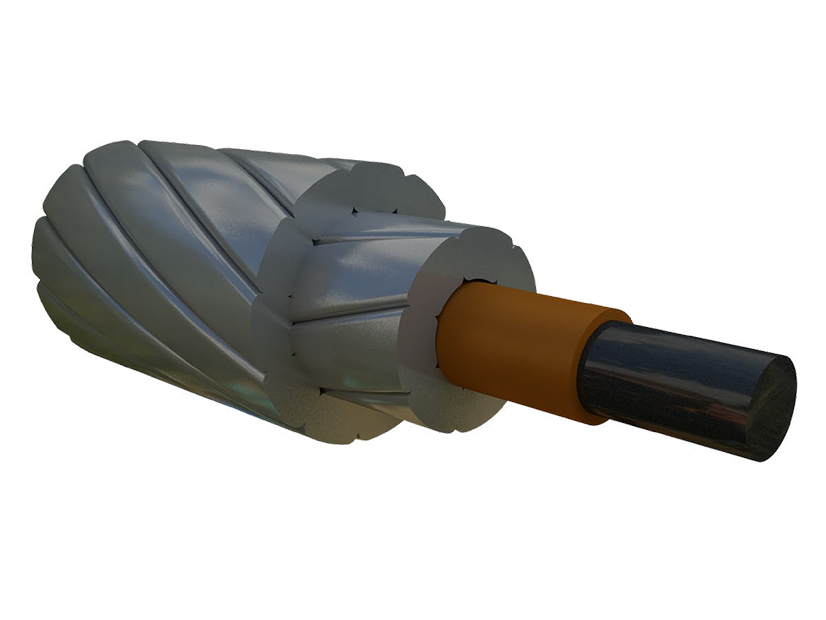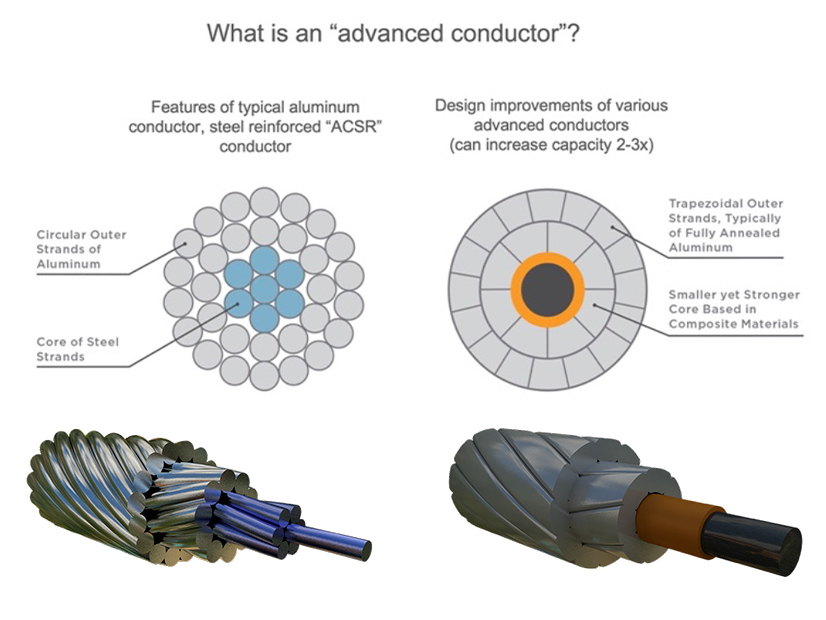An overlooked federal goal released alongside the Biden administration’s new power plant emissions standards could have an outsized impact on our power grid.
The Department of Energy’s goal of upgrading 100,000 miles of existing transmission lines by 2030 comes alongside utility claims that rising demand imperils grid reliability. An existing but underused technology — reconductoring with advanced conductors — can help utilities and grid operators overcome these problems.
In 2005, Xcel Energy urgently needed to bring more energy into Minneapolis-St. Paul, but the constrained urban environment made building new transmission difficult. Existing transmission lines intersected two major highways, crossed residential and industrial zones, and passed through protected wetlands and a National Wildlife Refuge. Permitting new towers and wires risked delay, extra cost and potential failure.
Xcel instead decided to replace the existing line with higher-performance wire, increasing transmission capacity along the same route by using the same towers. This “reconductoring” wire replacement process greatly accelerated permitting. After eight weeks of construction, Xcel doubled the line’s ampere rating.
New research from GridLab and the Goldman School of Public Policy at the University of California, Berkeley is the first estimate of potential clean generation deployment and cost savings that could be unlocked by reconductoring lines with advanced conductors. Replacing standard aluminum conductor steel-reinforced (ACSR) wires with advanced conductors can double a line’s capacity within existing rights of way at typically less than half the price of new line for similar capacity increases.
Reconductoring is a pathway to spur nearly four times more interzonal transmission capacity expansion by 2035 compared to the average new-build transmission rate. This can help provide the majority of near-term interzonal transmission capacity needs to bring to market the 2,600 GW of cheap clean energy currently clogging interconnection queues.
Reconductoring can’t meet all the needs of a low-cost clean energy system, but it can buy time to site and develop the new lines needed for long-term needs. Simultaneously reconductoring with advanced conductors and addressing barriers to new greenfield transmission provides the largest savings in total system costs of all considered scenarios: more than $400 billion by 2050 compared to business as usual.
The conclusion seems simple: Planning engineers and policymakers should find every place where cost-benefit analysis shows reconductoring with advanced conductor makes sense, then determine how to proceed. Unfortunately, nothing is simple when it comes to the bulk power system.
A companion report from Energy Innovation and GridLab identifies the barriers that have historically slowed use of advanced conductors and the policy recommendations to add advanced conductors onto the grid as quickly as possible.
Advanced reconductoring is stuck in the middle when it comes to cost recovery. Because it is a lower capital investment, monopoly utilities are instead incentivized to build entirely new lines. Advanced conductors also cost more than traditional wires, and regulators may view them as an unnecessary expenditure that gold-plates the system. A short-sighted, least-cost planning mindset for transmission owners makes it hard to accurately assess these benefits compared to either building new lines or using conventional conductors, so advanced conductors fall by the wayside.
New policies at the state and federal level can help ISO/RTOs get the most from this technology. State regulators and legislatures should proactively develop a policy position for advanced conductors, helping expedite planning at the state and ISO/RTO level. For example, RTOs lack the information to second-guess TOs’ determinations that reconductoring with a traditional conductor or greenfield transmission could be done with advanced conductors. State policymakers can also support education and workforce training in reconductoring.
FERC’s efforts to enhance regional planning processes can significantly improve resilience and integrate low-cost renewables through including advanced conductors. The rule approved by FERC on May 13 aims to modernize these processes by mandating forward-looking planning with a 20-year horizon, making the advantages of advanced conductors — increased transmission capacity and efficiency — more apparent in cost-benefit analyses. As regions update their compliance with this rule, especially in defining which benefits to weigh against costs, FERC can advocate for including conductor efficiency as a key factor in these evaluations.
Beyond recent rulemakings, FERC should also consider creating independent transmission monitors (ITMs). Many states lack substantial review over transmission planning; in California, for example, 63% of projects from 2019 to 2022 were self-approved as “repair and replacement” projects. Non-RTO regions are not required to produce data allowing stakeholders to study, expose and challenge incumbent utilities to explore reconductoring or other transmission expansion to benefit consumers. ITMs could add data transparency and transmission planning expertise capacity for states and regions to objectively evaluate transmission projects and ensure TOs consider projects that add significant value to customers at lower cost, like reconductoring with advanced conductors.
America’s grid needs new wires. Advanced reconductoring is ready. Now it’s time to implement the technology.
Eric Gimon is a senior fellow with Energy Innovation.





